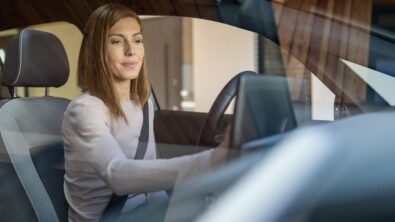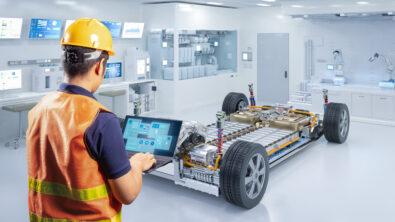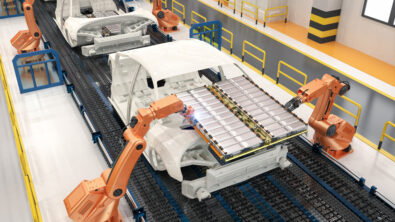Automotive Digitalization and the Customer Relationship
A current big idea that’s kicking around, one that motivates much of what we’re trying to do with Mentor Automotive tools and services, is that digitalization represents the third relatively recent disruption of the auto industry. Yes, the effects of the first two, the opening of China and the electrification of the powertrain, are still being felt. But the effects of the third will almost certainly be the most profound yet.
In any given week, a good portion of the news stories about the industry have at least something to do with digitalization. Check out the good reporting a few days back by Mike Ramsey and Mike Spector on revision of Tesla’s NDAs, then tell me the last time revision of an automaker’s customer contract language warranted a story in the mighty Wall Street Journal — and generated such passionate comments. Indeed the vitriol in the WSJ comment thread between Tesla fans and haters nearly rivals that generated by stories about the current U.S. presidential campaign.
Here as in many other third-wave stories, the crux seems to be the changing nature of the relationship between device manufacturer and consumer. For better or worse, gone are the days of consumers buying and operating a car (or many other devices) however they want. No matter the industry, network-connected devices enable an ongoing and ever closer link between makers and buyers, one that promises better service, more frequent updates and higher degrees of personalization than have ever been possible before. I’ll leave to others to fret the potential downsides of this new service-oriented future, which are likely overblown.
I’ve been thinking about how this same basic trend is so apparent when it comes to publications, events and the rest of the ways our industry markets and disseminates information. Of course marquee independent publications and conferences still exist, though nearly all of them are much diminished versions of their former selves. But just as increasingly will be true for carmakers, digitalization makes it easier than ever for companies like Mentor to go direct to customers and partners.
Two weeks ago many of us in Mentor Automotive were in Dearborn for our IESF conference, a showcase of information on electrical/electronic design. Attendance at the conference, which has grown every year, topped 1,000 people for the first time, evidence of the momentum behind our various automotive tools and the conference’s burgeoning reputation in southeast Michigan and beyond. As IESF fades into the rearview mirror, it’s important to note that throughout the year we reach the lion’s share of these attendees, and many more besides, in a host of internet-enabled ways — from email updates to webinars and online product demos/overviews to a steady stream of robust technical collateral published to Mentor.com. And existing customers have access to Mentor’s award-winning customer support, online and otherwise.
The point is that even as we continue to participate in independent events (we were at the Automobile Elektronik Kongress this week in Ludwisburg), and pitch stories and place ads in standalone publications, we’re better and more directly linked our customers than ever before, largely due to all the changes wrought by digitalization. And yes, EDA in general is a prime mover behind this all-digital future, so arguably that gives us extra standing to help the auto industry as it makes the leap.
One of our IESF speakers who seems to be navigating this future just fine was journalist and author Jim Motavalli whose latest book, High Voltage, covers the shift from internal combustion engines to electric power. (Hey, Jim, that was the second wave! When does your next book come out?) Jim’s byline has shown up a few hundred times in The New York Times and based on his long list of credits, it’s clear that Jim reaches an sizable audience of readers through a range of outlets.
A case in point comes from Jim’s regular contributions to NPR’s CarTalk blog. He notes that despite the show’s great brand and loyal audience, few people ever comment on his posts, at least on the blog itself. (This is a phenomenon I can relate to!) This isn’t true on CarTalk’s Facebook page, where Motavalli’s posts also show up. Before speaking for us in Michigan, Jim was in Nashville at the quirky Lane Motor Museum, a place that seems to warrant a visit if you’re a car buff. A fun, photo- and video-filled post for CarTalk on the visit generated no comments, while a link to that same post on Facebook generated loads of likes and shares, and several comments.
Our social media staffer, Joe Geoghegan, experimented with a few Facebook Live video streams from IESF, including one showcasing the Jaguar F-TYPE we were displaying at the show. That video, done on a whim, has been viewed 250 times so far. Great work, Joe! We’ll make sure to post links to all the professionally shot and edited videos of IESF speakers on the Mentor Automotive Facebook page too.
So digitalization, though massively disruptive, is a huge opportunity for direct and unmediated links, whether between carmaker and car buyer, journalist and reader, or a vendor such as Mentor Graphics and current or potential users of its tools. Among the winners as things shake out will be those companies and individuals who most aggressively work to cement these links.
For now, I’d say it’s safe to count on Tesla, whose customers contribute paeans for the company to publish and whose loyalists rush to its defense whenever it’s criticized, to survive the latest suspension brouhaha (which, you’ll note, started on an online forum and has gained steam on blogs like The Daily Kanban before it finally burbled up to the WSJ). Count on journalists like Motavalli, who finds more and more readers in thriving niche publications and increasingly via social media, to do fine as well.
And count on the customer relationship to be a central battleground as never before in the months and years ahead.
Read my last post, “Asking the Wrong Question about Autonomous Vehicles,” here.


